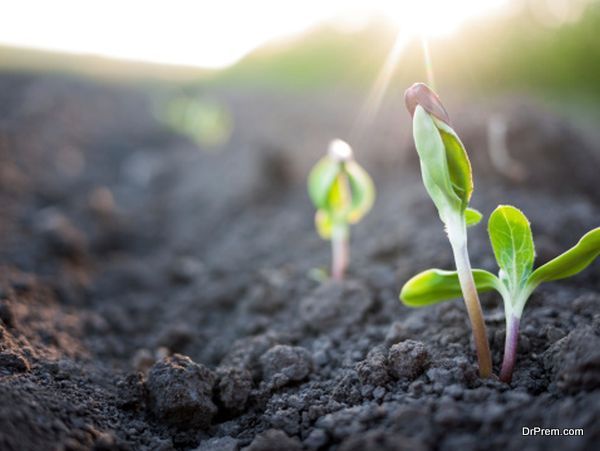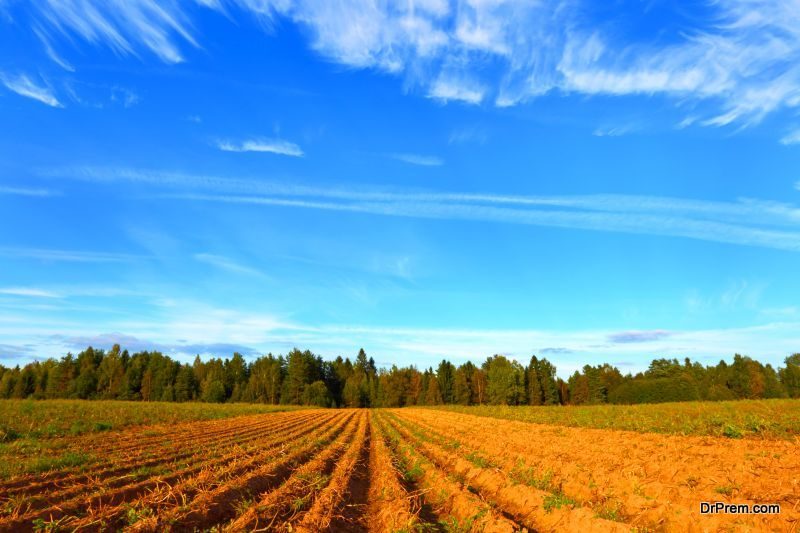Twentieth century farming practices has led to agriculture being quite ecologically intensive. The most prevalent model of farming throughout the world led to the segregation of agricultural land and land for biodiversity conservation. But scientists all over the world are now concurring that this model should not be practiced anymore, and instead, agricultural methods should support biodiversity instead. Farming methods should be designed and practiced in order to host different types of biodiversity, which have a positive or neutral effect on production, livelihoods and biodiversity. Let’s take a look at how biodiversity can be supported by sustainable agriculture:
How modern farming has harmed the ecosystem

Bees, earthworms, peregrine falcons, mangrove swamps, wild barley, tropical rain forests and orchids are symbols of agricultural and natural linkages and also stand for the fragility of the linkage. We can see the effects of modern farming on these linkages, which have almost driven them to extinction. All species are dependent on each other and modern farming did not respect this fact of nature, leading to a sharp delineation between agriculture and nature.
As world population increased, it was found to be justifiable to encroach upon lands meant for nature, and no effort was made to include nature in agriculture.
In modern agricultural methods, farming specializes on monocultures of crops, uniformity of soil and livestock is maintained. The area of land for cultivation is expanded reducing land in which nature can prosper. Many breeds of plant and animal life have suffered due to modern agricultural practices.
What is agricultural biodiversity?

Agricultural diversity consists of several levels – from co-existing ecosystems where people, livestock, crops and coexist, with different breeds and varieties of animal and plant species, along with the genetic difference of each breed or variety. Agricultural biodiversity is aimed at meeting the needs of humans and as a source for ecosystem services like pollination, soil dynamics and controlling greenhouse gas emissions. Sustainable agriculture is about expanding agriculture to improve the biological interdependence of the planet.
Sustainable agricultural biodiversity leads to better stability and production

Sustainable agriculture promotes diverse ecosystems, with many species and much more genetic diversity and has been seen to have better productivity than specialized agriculture. One study found that agriculture plots which grew 16 species had production levels which were 2.7 times more than monocultures. Another study concluded that meadows which were species rich produced 43% more of hay than species poor fields. Research has shown that manipulated diversity promotes stability in many levels of the ecosystem. Plots which are highly diverse had 70% more stability than less or non-diverse plots. Home gardens, though extremely labor intensive, are biodiverse and provide better benefits of nutrition and income for millions of small farmers globally.
Intercropping increases yields and enriches soils

Multiple cropping provides sustainability, improves nutrient availability and controls pests, which leads to higher production. A mixture of three different crops planted in one hectare has been seen to yield much more than planting just one crop. A 74% increase in yield is seen when wheat is intercropped with maize. Genetic diversity reduces the risk of crop failure.
Sustainable agriculture fights pests and weeds naturally

When multiple crops are grown simultaneously, it has been seen that there is an enhanced resistance to diseases and pests, due to intra and inter specific diversity. Diseases like potato and wheat blight are less severe in multiple crop systems than in monocultures.
Pollination plays an important role in agricultural biodiversity

Pollination improves genetic diversity of both plants and pollinator species like the bumble bee.
Studies have shown that there is a strong relation between pollinator diversity and crop diversity, and the interaction between the two is important for the entire ecosystem, enriching all the components. The survival of pollinators species increases as does the yield in crops.
Climate change can be fought with sustainable agriculture

Climate change resulting in completely new patterns of weather will have a huge influence on agriculture. Farmers will have to cope with varying climate and climate change, and this would be possible with biodiversity.
A scientific approach to understand and practice agricultural biodiversity is required to continuously meet the goals of improved nutrition and food security. Biodiversity is essential for enhanced ecosystems, better adaptability and to improve productivity.




